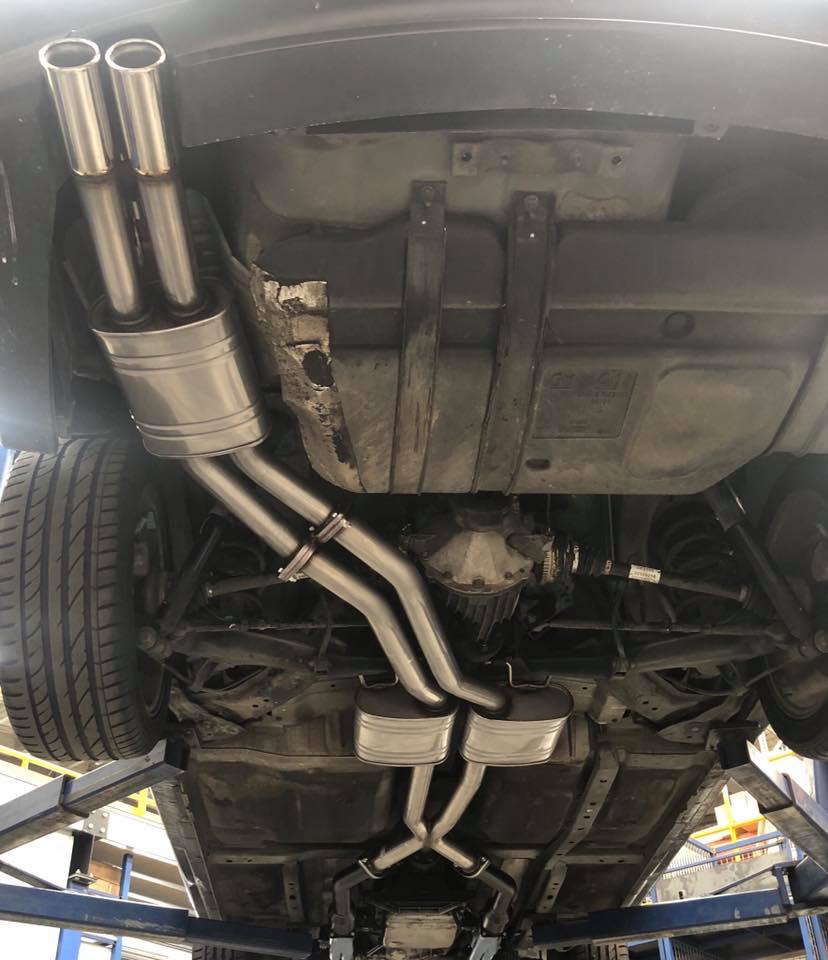What is the Purpose of an Exhaust Emission System?
The exhaust emission system in a vehicle is designed to help the engine function efficiently. It takes care of the toxic emissions produced by a vehicle and naturally converts exhaust from the engine into gases, eliminating them from the vehicle and making them safe to breathe. It also helps to significantly minimise the noise level of a vehicle.
Location of the Exhaust System in a Vehicle
The exhaust system is divided into two parts; the visible part; and the invisible part. The visible part is the tailpipe located underneath the back of a vehicle while the invisible part is the complete system which is larger than the tailpipe. The invisible part of the exhaust emission system is the most functional part. The whole system functions from behind the engine and runs all along the underside of the vehicle leading to the tailpipe.

How does the Exhaust System Work in a Vehicle?
The exhaust system is made up of some important components that support the smooth running of the vehicle engine. These components include the oxygen sensors (known as O2 sensors), catalytic converter, Onboard Diagnostic System, Power Control Module, intake and exhaust manifolds (also known as headers), exhaust pipes, and muffler.
The Oxygen sensors are designed to monitor the air fuel ratio and relay it’s findings to the ECU to make air fuel adjustments to increase performance and fuel economy. Essentially, O2 sensors are one of the most crucial and susceptible components of the engine. A faulty oxygen sensor can lead to catalytic converter damage and poor engine performance. Failure to repair it immediately can cause a major and avoidable expensive repair.
The catalytic converter significantly minimises the production of harmful gases such as nitrogen oxides, unburned hydrocarbons, and carbon monoxide.
The Onboard Diagnostics System offers self diagnostic and detailed information about the vehicle in the form of DTC (Diagnostic Trouble Codes). You can read the DTCs by plugging in a code reader, or scan tool into the sixteen-pin Onboard Diagnostics System, which is located below the steering column. The codes offer fast and comprehensive information about engine problems and isolate the systems and components that need repair or service.
The PCM (Power Control Module) functions as the electronic control system of the vehicle. It is often a blend of the transmission control unit and the engine control unit. The PCM is designed to read the information supplied by the Oxygen sensors and some other key components of the vehicle. It controls the engine systems to adjust their operations for safety and effectiveness. The exhaust emission system also helps to minimise pollution from gas vapour that escapes from your fuel tank. It transforms, manages and channels out the engine gases from the vehicle and its passengers, keeping the air safe to breathe.
How to know if the Exhaust Emission System needs Repair?
The first major sign of a faulty exhaust system is an increase in the noise that a vehicle makes. If the muffler is not working properly, the noise significantly increases and you will hear more unpleasant sounds coming from the vehicle. Another obvious sign is the drop in fuel efficiency of the vehicle.
A vehicle with a faulty exhaust emission system usually consumes more fuel than normal. So if you discover that you are stopping at the petrol station more frequently to top up your fuel, you may want to take a look at your exhaust system. If you don’t fix the issue in time, it can cause a more damaging effect on your vehicle engine which will require a more costly repair.
Other common indicators of faulty exhaust systems include reduced power when you are accelerating, rattling noise when starting the vehicle, and smell of rotten eggs when driving the vehicle. Sometimes, faulty exhaust doesn’t reveal any symptoms until you take it for professional check-up. It is, therefore, recommended that you have your vehicle inspected at least twice a year so that you can nip any problem in the bud before it escalates.





